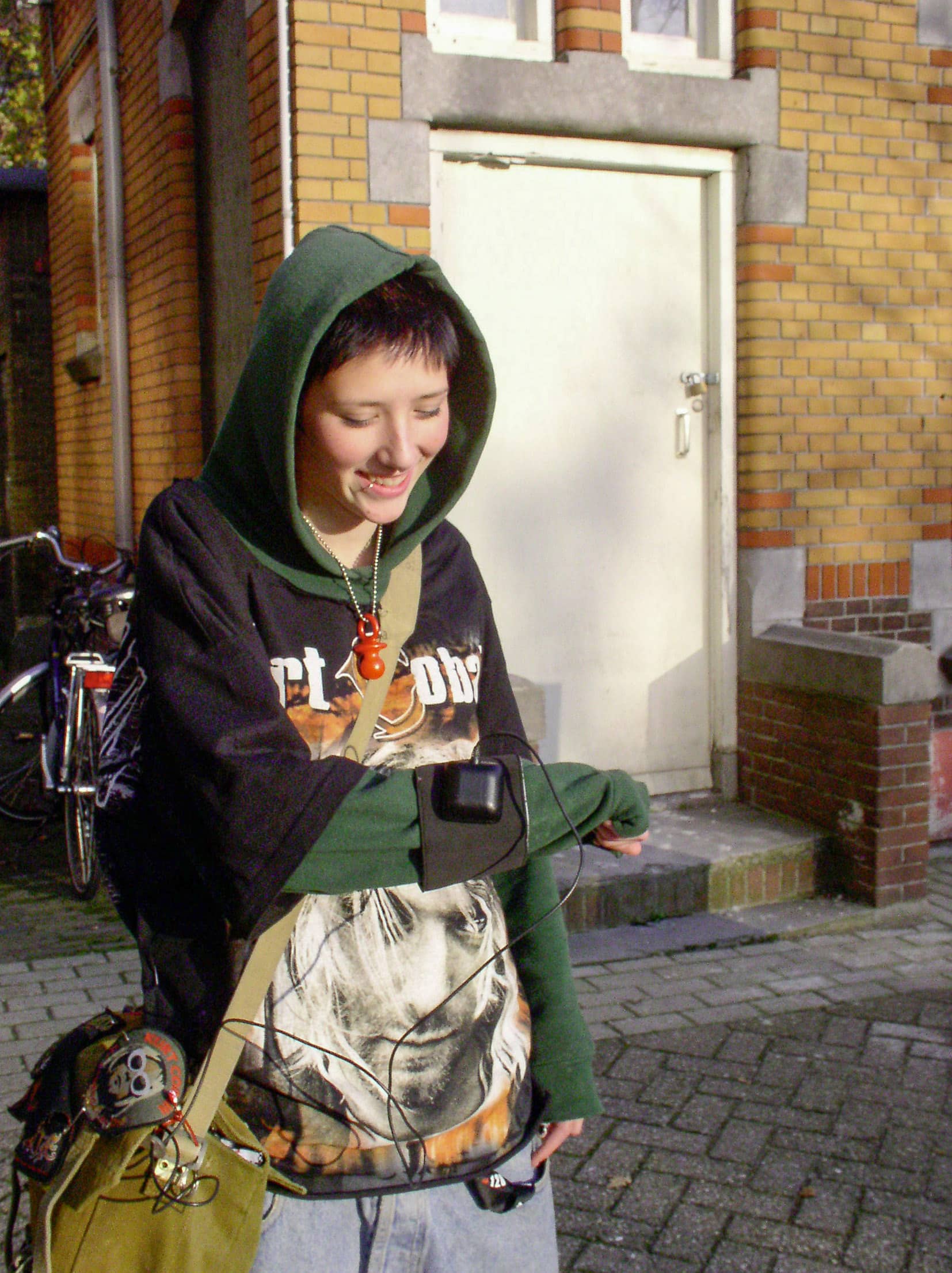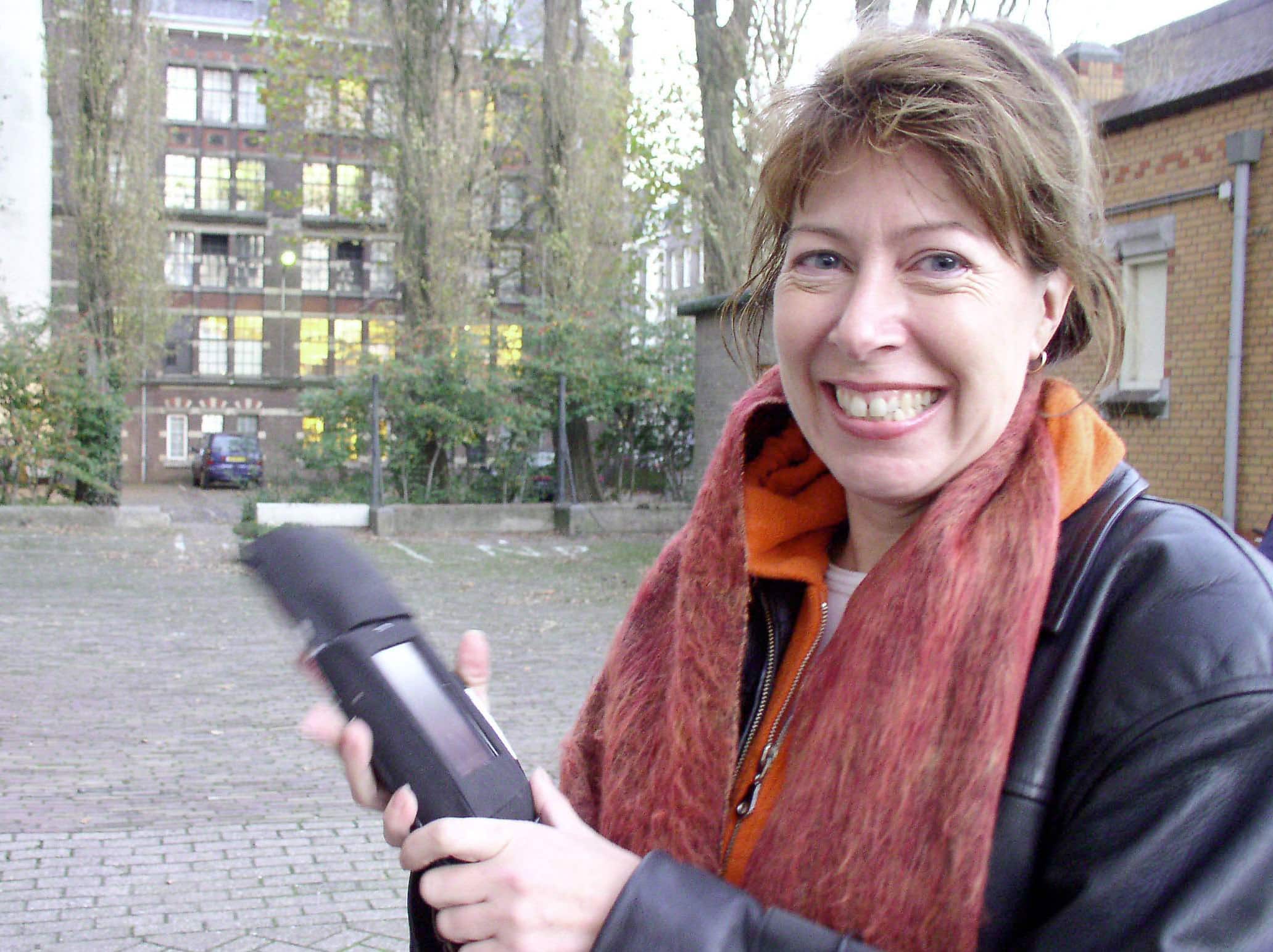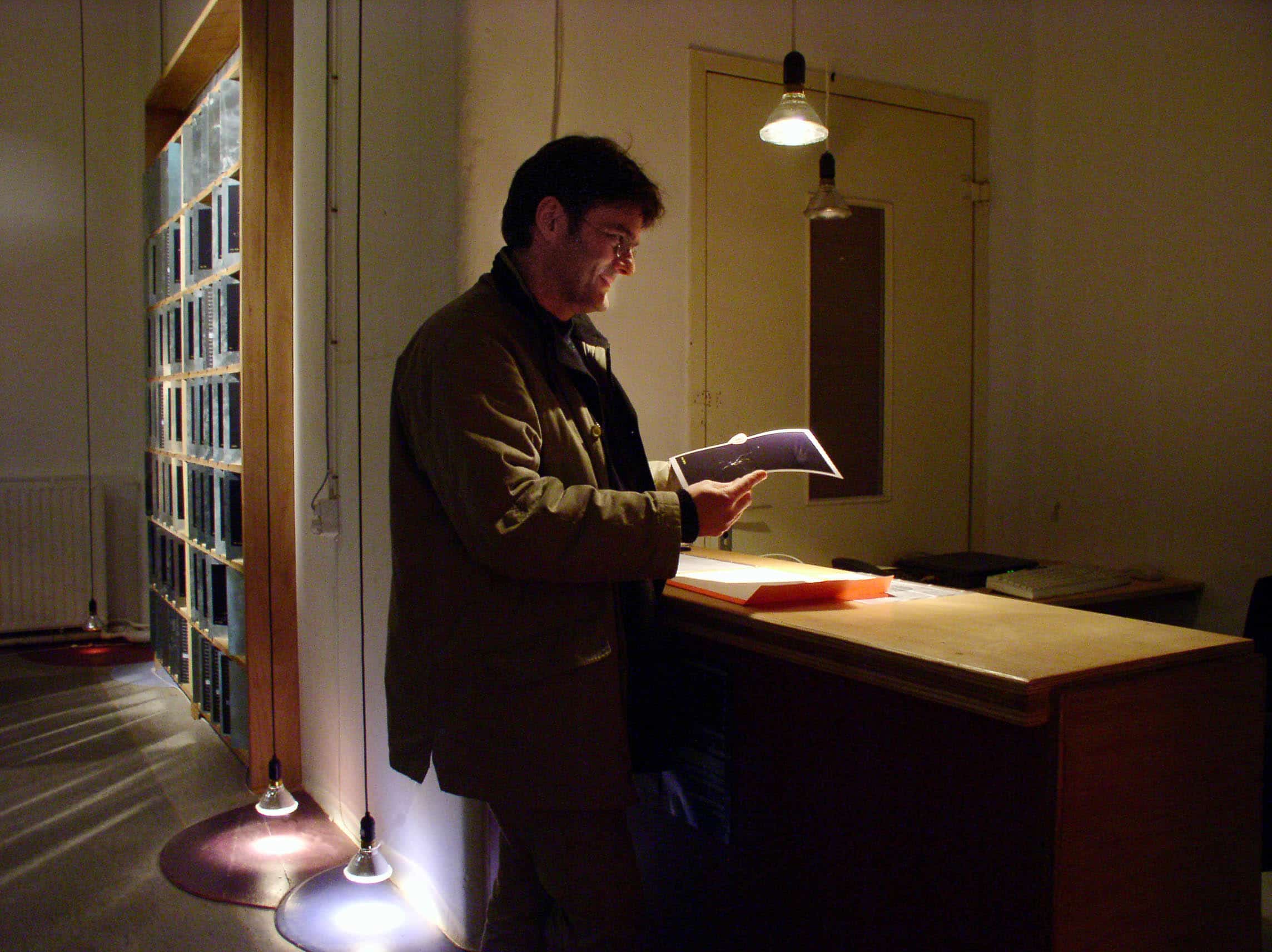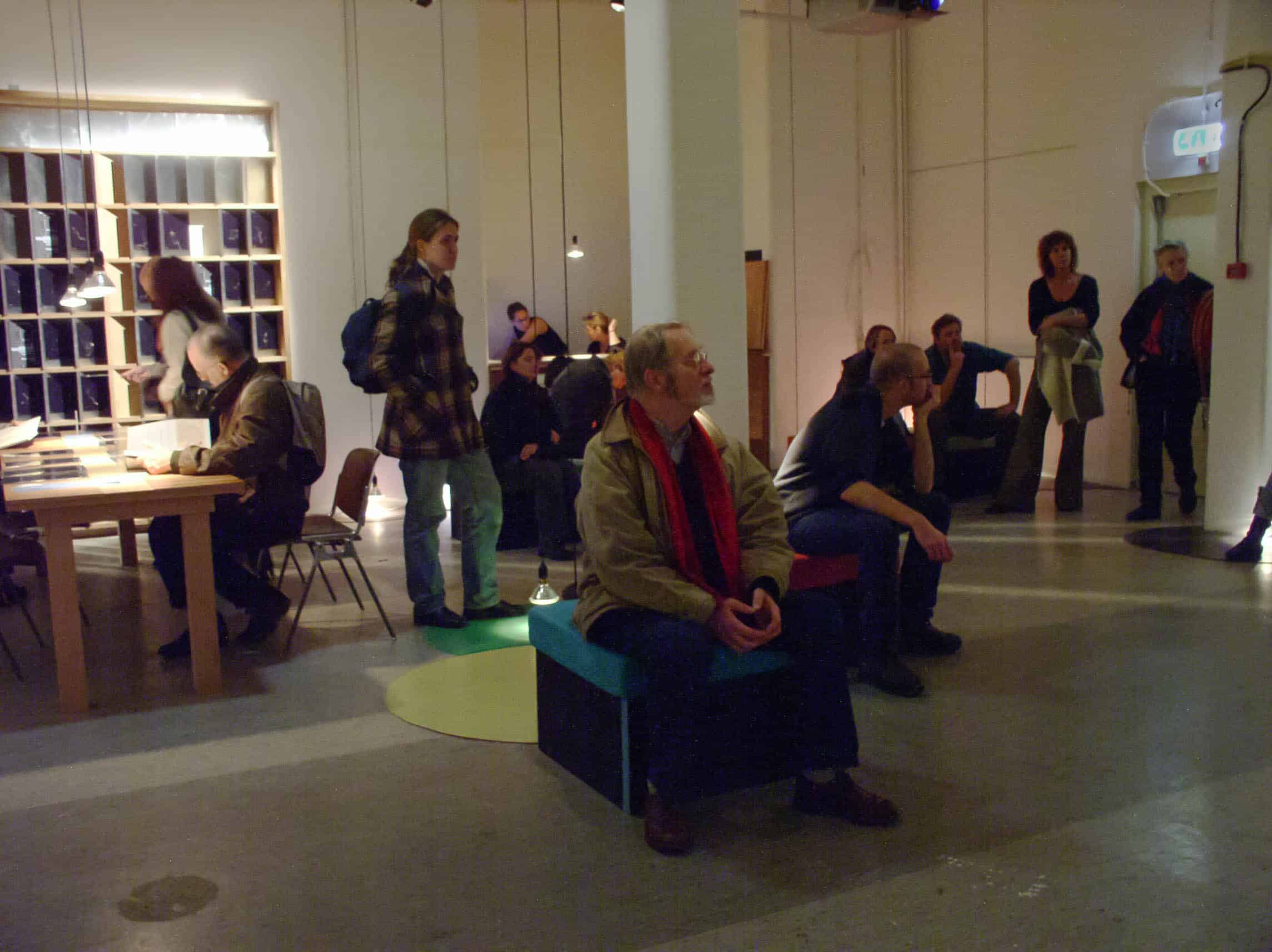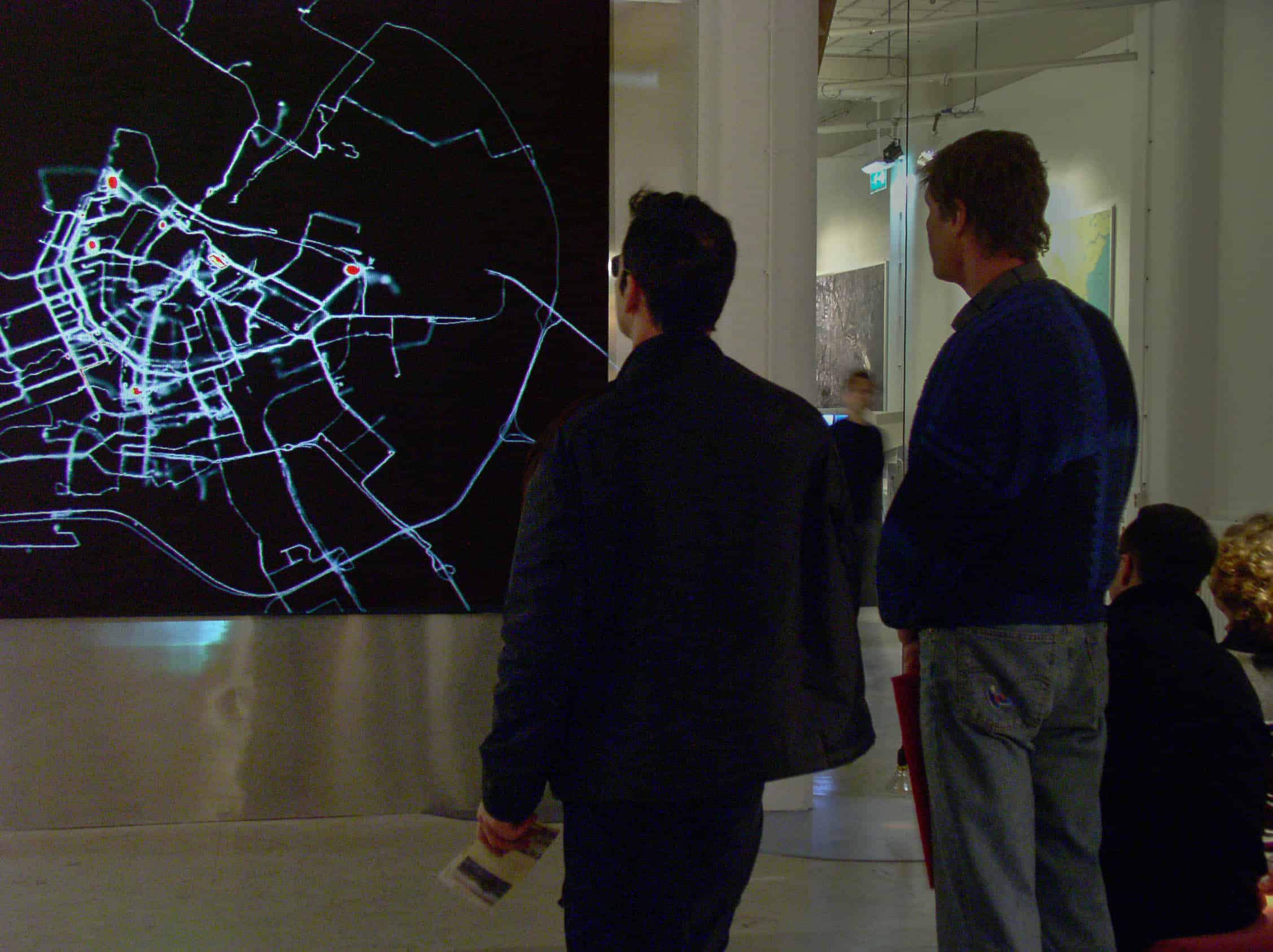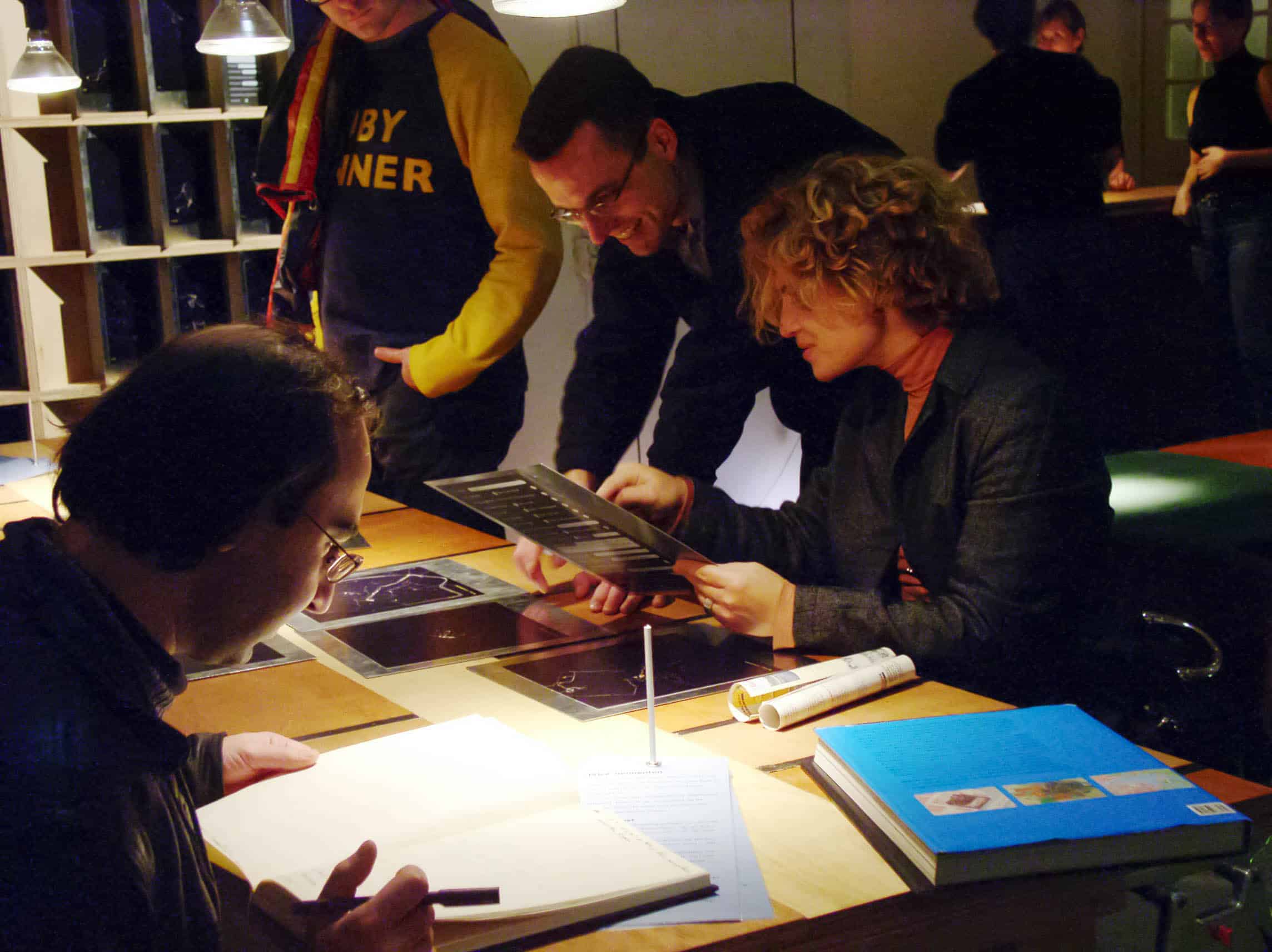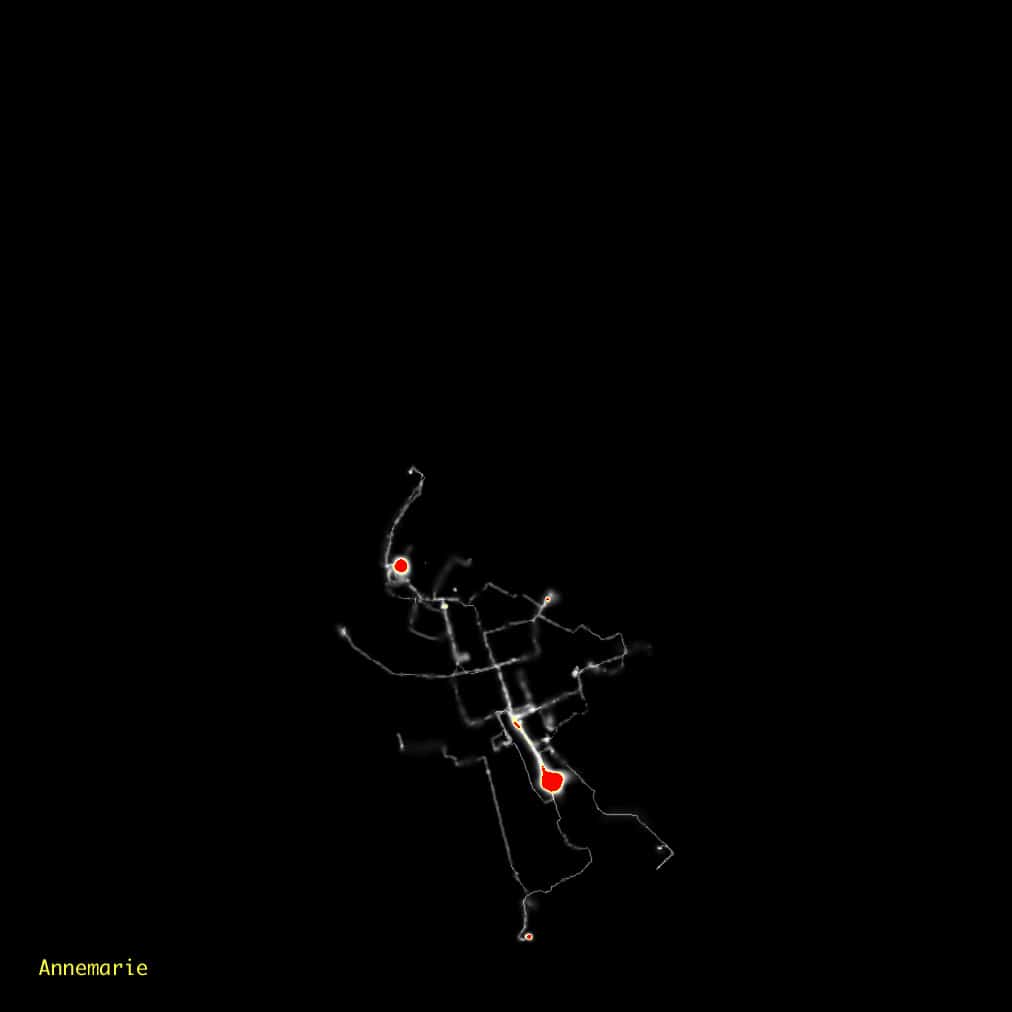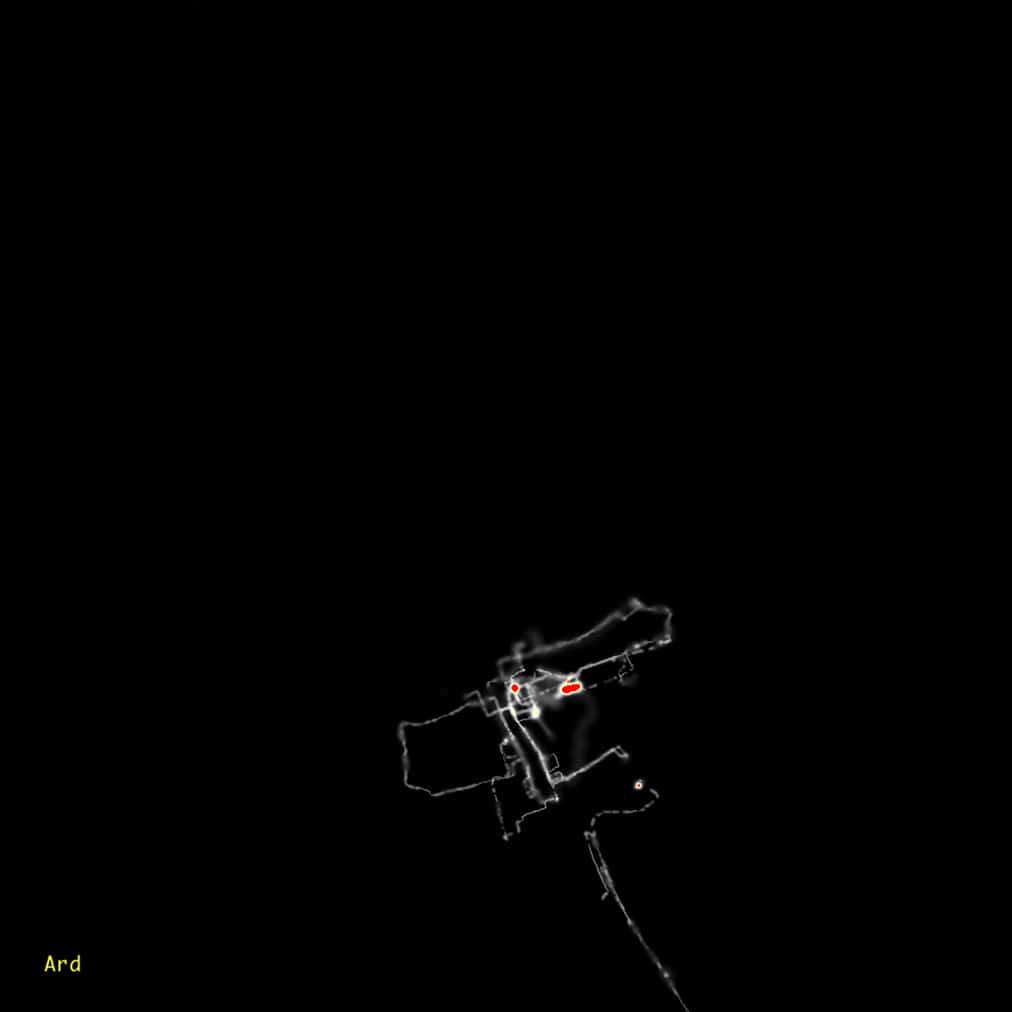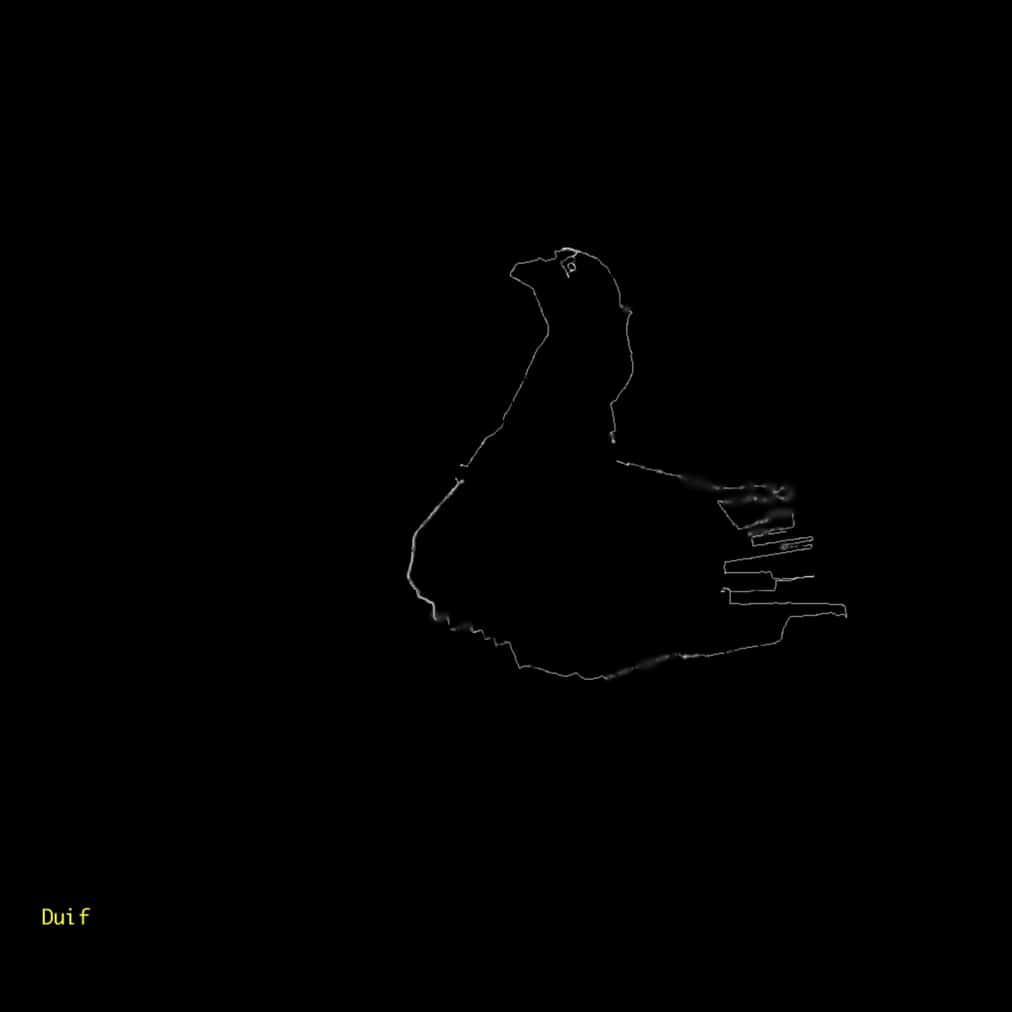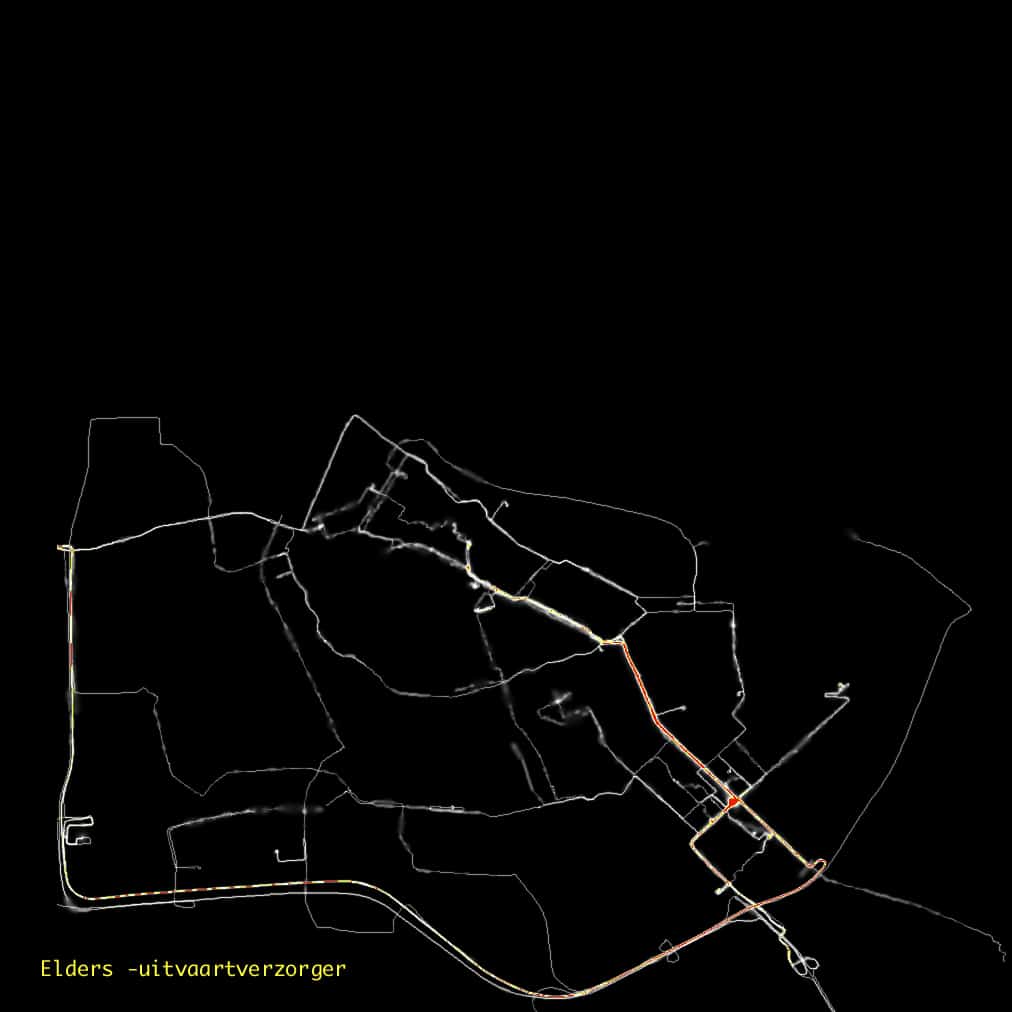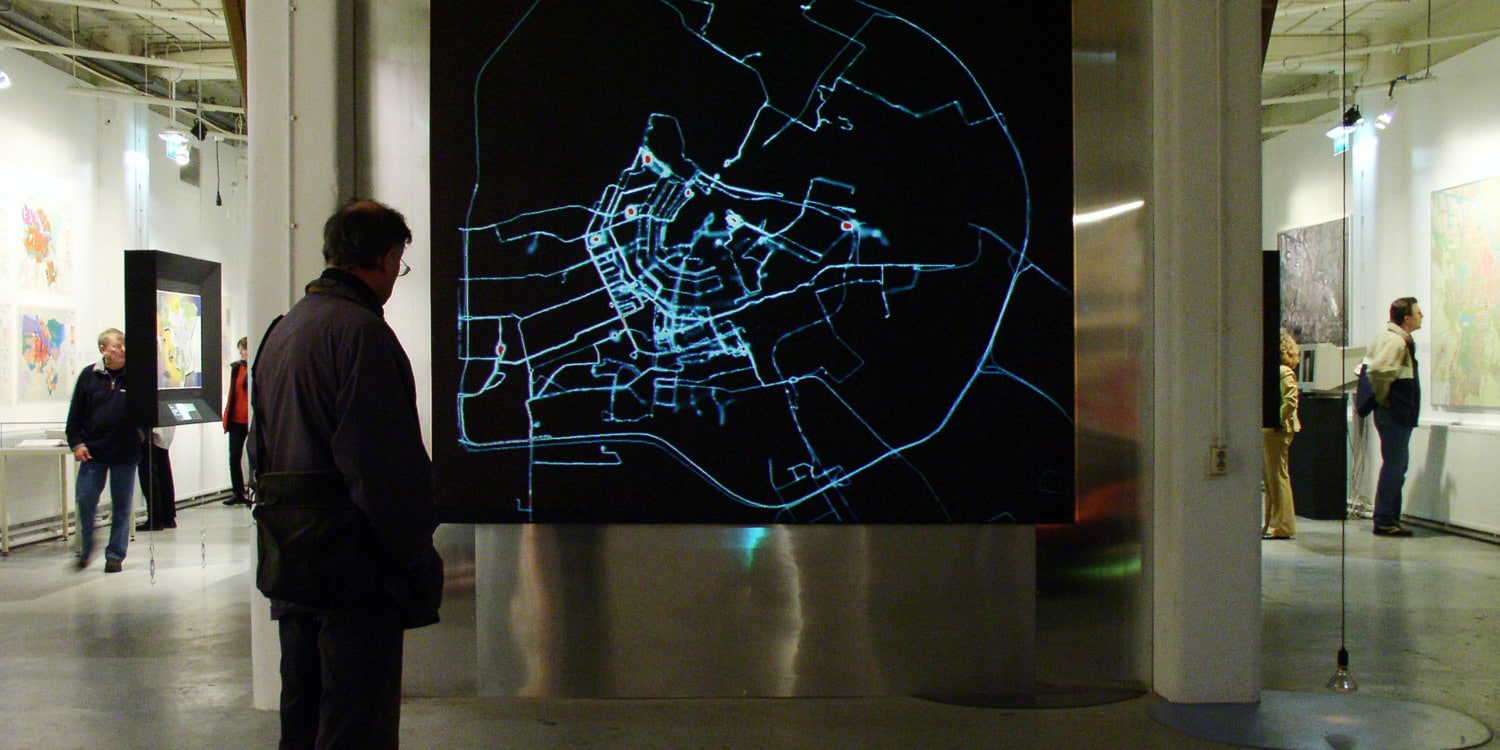
Amsterdam Realtime 2002
AmsterdamREALTIME 2002; Esther Polak, Jeroen Kee and Waag Society. Participative project // Looping, projected animation (20 min.), and a series of color prints.
AmsterdamREALTIME is a pioneering and groundbreaking project in which participants GPS-traced the routes during their private lives, resulting in a recognizable map of Amsterdam.
Participants carried a specially prepared little bag for one week in which a PDA (personal digital assistant), GPRS (data communication), and a GPS device were linked together.
Why was AmsterdamREALTIME so much ahead of its time?
Only in 2000 was the GPS released by the US government in a form that became accurate enough to use for mapping. With AmsterdamREALTIME, that precision potential was explored in an artistic way long before commercial use was made possible. To illustrate this historical timeline:
2002 – AmsterdamREALTIME
2003 – first pda with GPS (Garmin iQue 3600)
2003 – Google Earth
2004 – TomTom (satellite navigation for cars)
2005 – Google Maps
2007 – first phone with GPS (Nokia N95)
2008 – first iPhone with GPS
Not unmentioned should be that Google Earth was preceded by the 1993 German art project by ART+COM Terra Vision.
The 2002 participative project in the Amsterdam Archive
Amsterdam residents could apply to participate through a form published in the newspaper Parool and through specially designed flyers spread in town or at the venue during the 6 weeks of the exhibition. After participating, each participant was given a print of their personal route. These prints also were part of a growing archive that visitors could explore.
Esther Polak, Jeroen Kee and Waag Society were invited by the Amsterdam City Archive to produce ‘AmsterdamREALTIME’ for the 2002 exhibition ‘Maps of Amsterdam 1866-2000’, held in the Amsteram City Archive.
During two months, 75 volunteers were tracked by GPS in their everyday movements and routines around the city. These traces were then drawn as white lines over a black background. Lines were sharp or blurry depending on the accuracy of the GPS receptions. The resulting life-animated map had a distinct look and feel. The project produced a psychogeographic experience: precise nor rational. Still, it expresses the intuitive and personal aspects of geography. It shows a city that does not consist of buildings, roads, and water but of the movement of its inhabitants. A color change from white to yellow to red indicated a greater frequency of travel. Unexpectedly, red dots emerged when participants came to a stop. The map was also influenced by various transportation means: a cyclist will produce completely different traces than someone driving a car. Once the participants became aware of their mapping outcomes, some even attempted to create artful GPS drawings. Interestingly, the final combined map of all individual traces again resembles an objective city map.
Artistic motivation
The starting point for this work was our curiosity to find out if it was possible to make a map of Amsterdam emerge from authentic route data. We wanted the city to draw itself. We wanted the audience to witness the real-time emergence of the tracks and, simultaneously, offer them the possibility to subscribe as participants through a form. This way, the audiance would identify with the participants rather than take a voyeuristic position.
In our everyday lives, we usually follow fixed paths and trajectories throughout the day: from home to work or school, to family, to familiar stores, and to places where we spend our free time. We all have invisible maps in our heads of our immediate surroundings and the roads we take daily. This way, we move around in the city, and our mental map determines the choices we make in this process.
Maps of AmsterdamREALTIME, from individual citizens and a map of superimposed tracks.
The interactive website
In 2003, together with Bente van Bourgondiën en Aske Hopman, we developed an interactive CD from the project. This CD was used as a small-scale gift. 2006, the CD was printed as a larger edition and distributed as part of Open! Magazine. nr 11. In the third stage, 20o9, the interaction was made accessible as an online website. That website was discontinued in 2020 due to the end of Flash support. It survives now as a screen capture that you can find alongside this text.
Esther, Bente and Aske working on the flash interaction at Waag Society.
Video showing the original Flash website:
Practical information
AmsterdamREALTIME, Esther Polak Jeroen Kee en Waag Society; 2002
Distribution via LIMA Amsterdam
exhibition history
2002 – Amsterdam Archive original edition
2003 – 1e Architectuur Bienale Rotterdam
2003 – Riga edition Riga REALTIME
2006 – Playmobiel exhibition in ARTI Curated by Nathalie Faber Cut-N-Paste
2011 – Muhka, Graphology #3 Antwerpen
2016 – AmsterdamMuseum
2024 -2025 – Nieuwe Instituut; Dutch More or Less
Esther and Jeroen during the opening in NAI 2024
distribution
LI-MA, Living Media Art
collections
AmsterdamMuseum
private collections
nominations
2002 ISOC nomination category Net-Art
2002 Doors of Perception (Open Doors Grand Prix)
credits
AmsterdamREALTIME project credits 2002/2003
Esther Polak – initial concept / artist
Jeroen Kee – design exhibition installation / artist
Waag Society – research, development and project production
Tom Demeyer – software development, technical lead
Aske Hopman – concept and project management, tech research, website
Marleen Stikker, Floor van Spaendonck – concept advice
Kari Anne Bakker (intern) – producer
Bente van Bourgondiën – postproduced CD animation/interaction development
Lies Ros- flyer and website header design
Ina Arends – protective portapack design and production
AmsterdamREALTIME website version 2009 credits
Esther Polak
Aske Hopman / ASKii.nl
Bente van Bourgondiën / b3nt3.nl
Ludger Smit – Tentoonstellingsmaker Het Stadsarchief Amsterdam
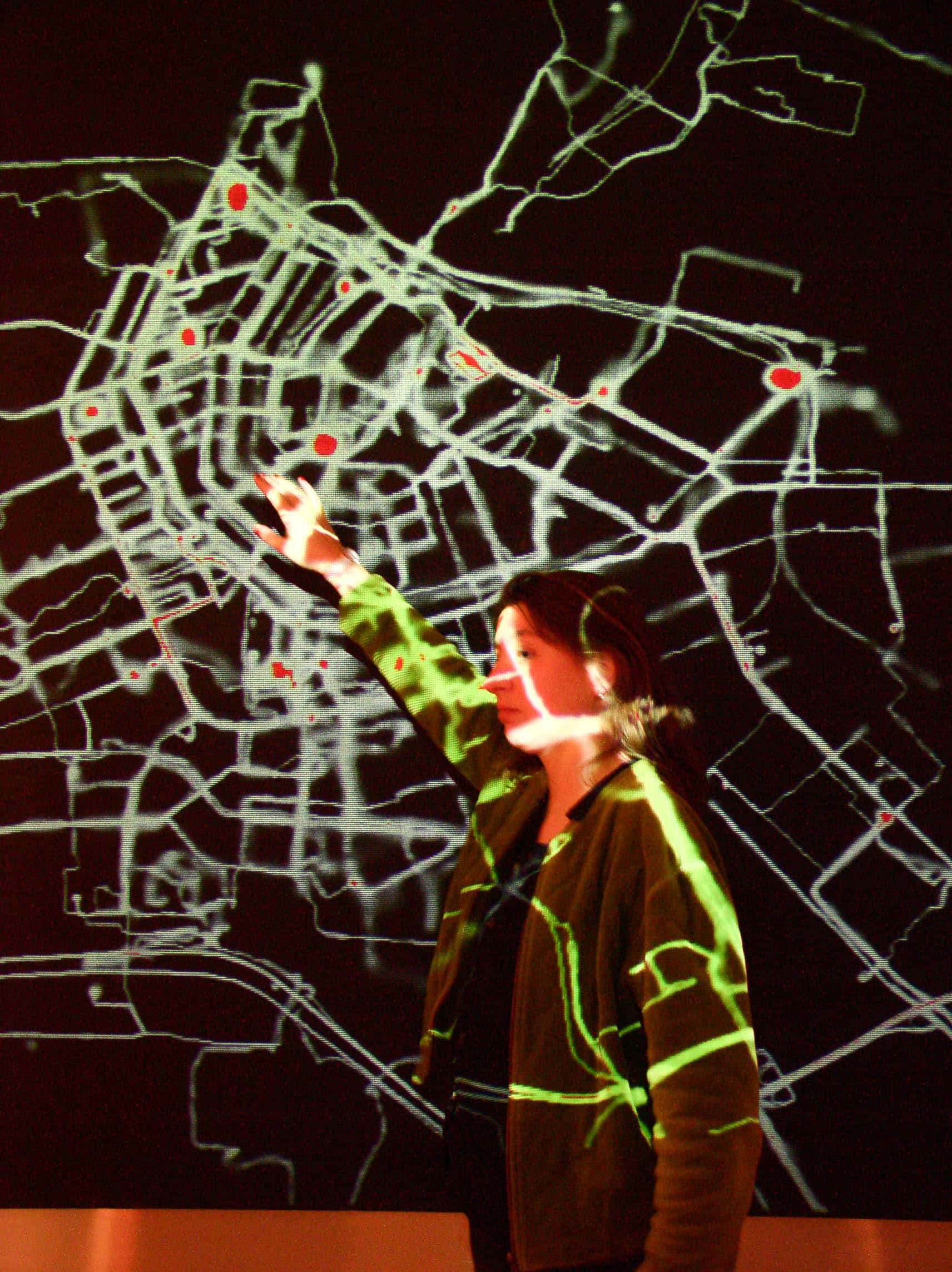
Esther Polak in front of the AmsterdamREALTIME projection at the Amsterdam Archive in 2002
funding
The Amsterdam Fund for the Arts (AFK), and the Mondriaan Fund.
Supported by Het Parool, Beamsystems and KPN Mobile
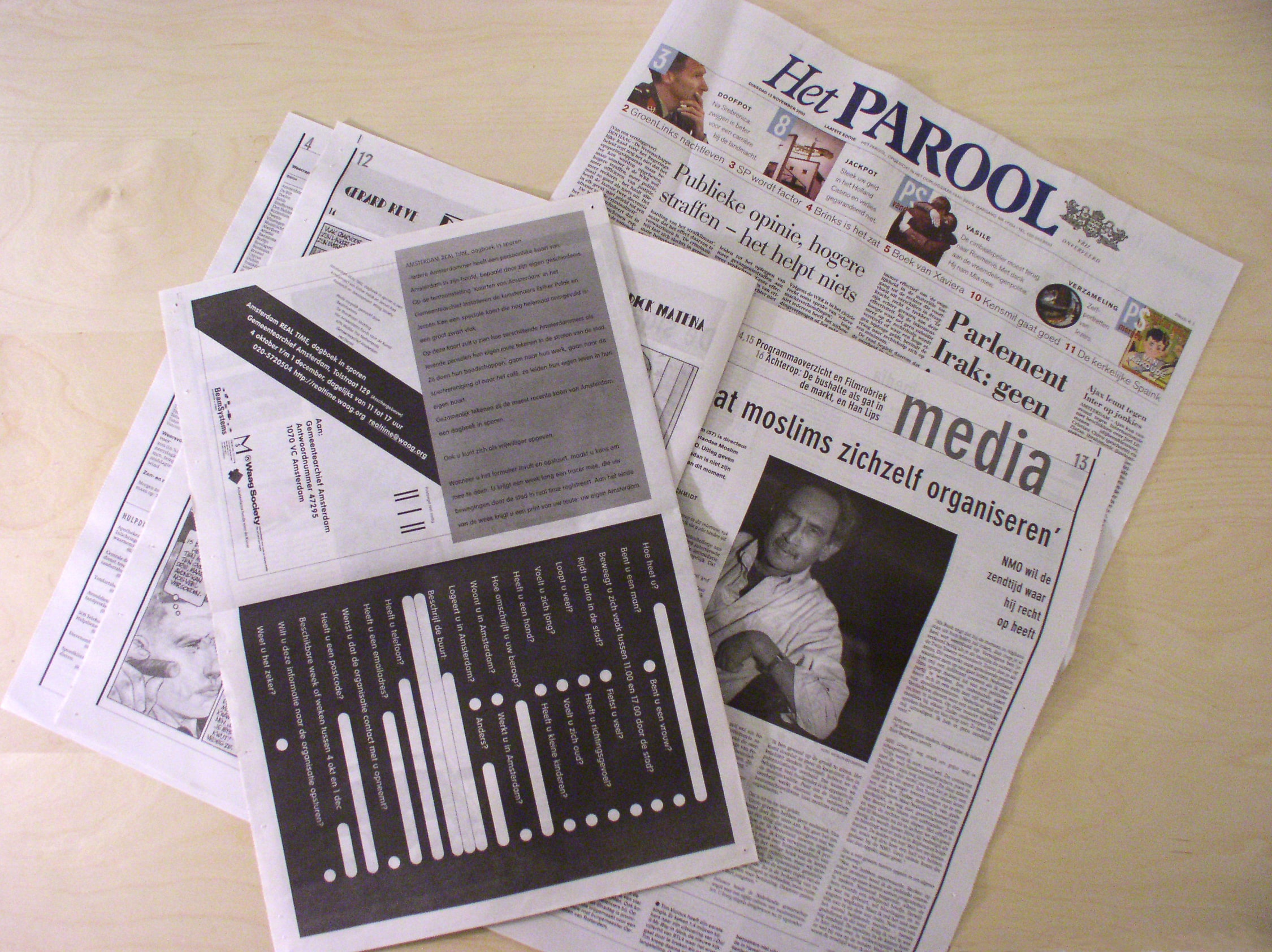
The participation form as publiced in the local Amsterdam paper “Parool”
press/writing
find a complete press and writings archive here
2002
Trouw 12 okt. 2002 Grootse Amsterdamse visioenen Hans Masselink
NRC Handelsblad, 2002 23 nov Hollands Dagboek: David Elders
2003
NRC Handelsblad, 2003 feb 21: Cornel Bierens ‘waar zijn die vogels dan?’
Wired, 2003 nr3 : ‘Emerging Traffic’
Bizz magazine, Zzap! 2003, aprilnummer: ‘GPS-systeem wekt stadskaart tot leven’
Verkeerskunde, bedrijfsleven, nr. 4: 2003: ‘GPS in Art’
Computable, 16.05.03: foto voorpagina
2006
ACME-journal Critical GPS: Toward a New Politics of Location, Amy D. Propen; 2006
Hoe nu verder met e-culture Arie Altena in MetropolisM 2006
Playmobiel publication
Open 11 Hybrid Space. How wireless media mobilise public space
2007
Bevrijding uit de 100 jaar eenzaamheid van de 20e eeuwse kunst, Arjem Mulder 2007
Dolen Door de Stad, Steven van Teeseling, De Groene 2007
2009
Interview with Esther Polak in Neural Issue 33 Summer 2009
2014
Frieze Bytes &Bricks
2015
Article In InVisible Culture by Ned Prutzer 2015
2024
2024 feb 5 Ellen Mueller: Interview with Esther Polak


